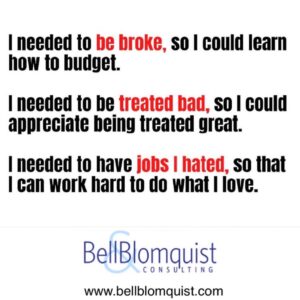From time to time any company should revisit its objectives and take it business plan under severe scrutiny, not necessarily because there are issues, it is more about making sure you are optimized and going in the right direction.
It is a bit like having a check list while flying, it is all about to make sure you do things properly, and that you do not miss out on any important steps and most important, don’t make any unnecessarily misstakes.
If you decide to proceed without making sure where you are heading, then you might end up in a situation you did not intend to find your self in.

I am sure if you ask anyone who has been in a mishap or accident what happened , the all can give you a vivid description of what happen from their point of view, but in many cases the fail to explain why.
In most cases its difficult to have a clear overview of your company situation, and in many cases even if your business is succeeding or failing, its takes in most cases at least 300-400 days to correct your heading in a structured way.
The most common misstake I can see is that you are focusing on minor issues instead of making sure what is really important and what you really should be focusing on both in a short term but more important in the long run.
When struggling you loose a lot of momentum , because you are focusing on problem managing instead of upholding the momentum, its like a pilot with a minor flight issue and failing to see that he is losing altitude.
Once you hit the ground, it’s not much you can do, at best it can be called damage control, but in many cases its a long way back, especially if you lost your funds and have to reimburse your financial situation.
The best advice I can give you if you are trying to solve it by yourself is, make sure you have a co pilot in the cockpit , at least get a second opinion or divide running the company into a proactive and a reactive response to your situation between you.
The reason for this is that someone has to fly the plane and someone else has to trouble shoot your situation and focusing on solving your imminent issues and deciding on your future options.

In some cases its about deciding what to focus on and not, making sure you are not distracted by issues that really not is contributing to your business development and your core business.
Another important aspect is also to decide when to stop focusing on certain areas and decide to move on or into new areas.
If you identify areas of less important, make sure they don’t steal away to much time from your main focusing areas.
Another aspect is if you are equipped for the journey you are putting yourself up to do, If you decide to cross the Atlantic, it can in theory be made with a life west and a dingy, but the risk is way beyond what can be expected by anyone to take.
Risk management is a huge part of your business plan, in some cases it can be even more devastating hanging on to plans that in the end really is not the best for you.
In other cases it can be employees or partners that no longer are contributing to your business core and it might be better to decide to go separate ways rather than hanging on until issues get worse or totally out of hand.
In the end it is all about deciding what you want to do, if you don’t know where you are heading, then its like the answer from the cat in Alice in Wonderland, It docent matter what road you decide to follow.
The best way to make a major decision is to take time to think it trough properly, give it a day or two and then revisit your plan to see if it still holds water, then let some one you trust have a say what the think about your plan and then act on it.
If you need a second opinion, let me know, I am all ears.
Stay safe
Christopher Bell Blomquist Consulting
Managing Director
Lead Negotiator Consultant
Scotwork Sweden





